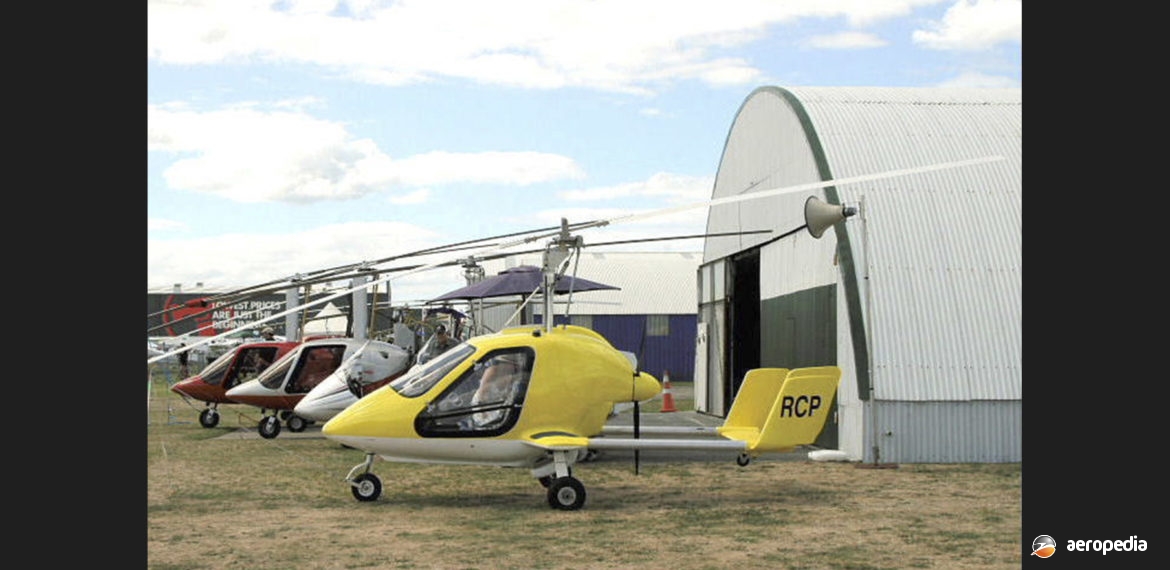Photograph:
Aero-Sport International Kahu ZK-RCP (c/n K1) at Auckland, NZ on 17 February 2008 (Peter Lewis – NZCIVAIR)
Country of origin:
New Zealand
Description:
Two-seat sport gyrocopter
Power Plant:
One 131 kw (175 hp) Wade Aero (Modified Mazda 13B) two-rotor rotary engine
Specifications:
- Length: 4.64 m (15 ft 3 in)
- Height: 2.9 m (9 ft 6 in)
- Rotor span: 8.8 m (29 ft)
- Width: 2.35 m (7 ft 7 in)
- Max speed: 185 km/h (115 mph)
- Cruising speed: 145 km/h (90 mph)
- Rate of climb: 300 m/min (984 ft/min)
- Take-off roll: 90 m (295 ft)
- Landing roll: 30 m (98 ft)
- Service ceiling: 2,438 m (8,000 ft)
- Fuel capacity: 60 litres (13 Imp gals)
- Empty weight: 280 kg (617 lb)
- Useful load: 270 kg (595 lb)
- Loaded weight: 544 kg (1,200 lb)
History:
Designed and developed by Aero-Sport International Ltd of Auckland, NZ the prototype of the Kahu two-seat light sport gyrocopter (ZK-RCP – c/n K1) had been under development since 2001, flying for the first time on 27 July 2001 and receiving a temporary flight permit certificate allowing for full testing on 24 August 2001. Development proceeded with a view to obtaining New Zealand certification in the Microlight Class in 2003.
Construction was of dural tube and composites. The machine had a pre-rotator which was coupled to the hydraulic pump. Upon actuation of the pump by a control cable, engagement of the pre-rotator to the rotator head commenced. The rotor was spun to 200 rpm prior to take-off, which shortened the take-off distance. The pylon was modulated to absorb rotor vibration. Power plant was a 131 kw (175 hp) [at 5,800 rpm] Mazda 13B twin-rotor rotary engine, this being developed for aviation use by WadeAero, having a displacement of 1,308 cc (80 cubic inches).
The machine was aimed at the ultralight market but was expected to achieve in due course full CAA approval and could be modified for semi-commercial applications, including the ability to land on water. In the military role it was able to fly reconnaissance missions or transport personnel. The name Kahu came from a well known harrier hawk bird often seen soaring the countryside in parts of New Zealand. The machine could be towed behind a motor vehicle on a specially designed trailer for storage at home or in a garage with the rotor blades removed.
On 3 October 2000 the Kahu prototype was registered by the New Zealand CAA . Work then proceeded with an aim of gaining full New Zealand Type Certification and it was expected the machine would be used by sport and recreational pilots, in the agricultural field, and in patrol and surveillance work.
The Company also had a four-seat gyroplane on the drawing board which would be built in prototype form in due course when the Kahu project had been completed and was in production.

